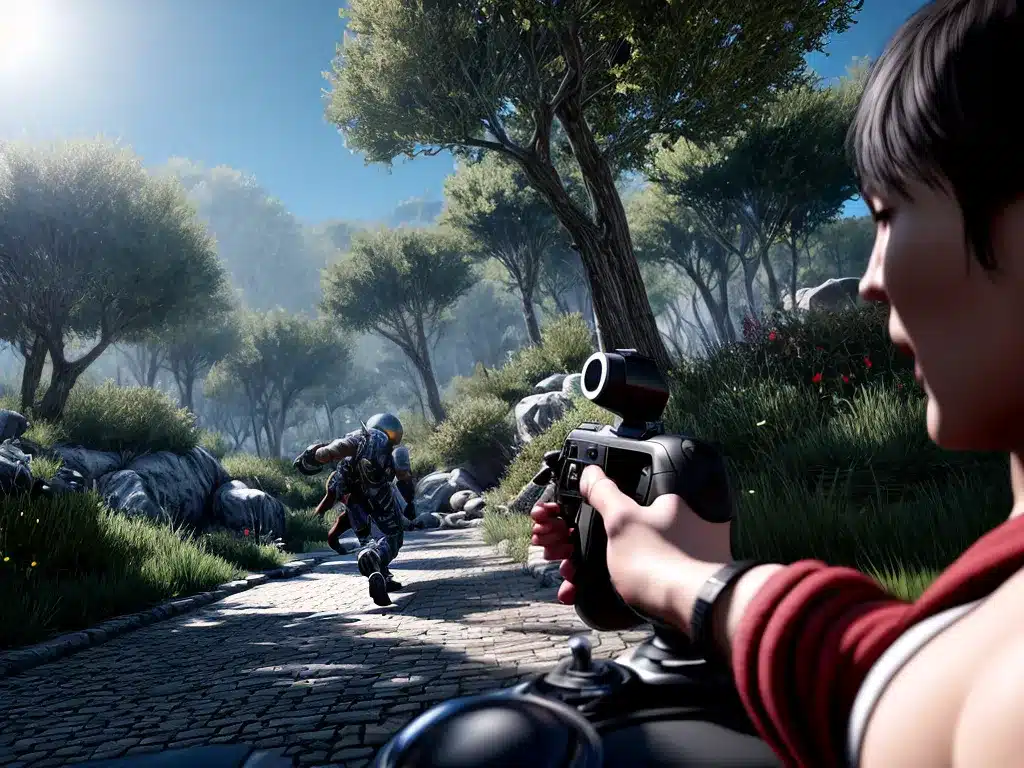
Introduction
Graphics technology in video games has come a long way in the last decade. With the rise of real-time ray tracing, game visuals are reaching new levels of realism that were not possible before. In this article, I will provide an in-depth look at how next-generation ray tracing is revolutionizing graphics in modern video games.
What is Ray Tracing?
Ray tracing is a rendering technique that traces the path of light as pixels in an image. It simulates the physical behavior of light as it interacts with objects in a 3D environment.
Traditionally, ray tracing was used for rendering high-quality CGI in films and animations. But it was too computationally intensive for real-time graphics in video games. Rasterization was the dominant rendering technique in games for many years. It approximates lighting effects like shadows, reflections, and refractions.
But rasterization has limitations. It cannot accurately simulate complex light interactions like global illumination, caustics, ambient occlusion, etc. This is where ray tracing comes in. It provides physically accurate lighting, shadows, and reflections in real-time.
How Real-Time Ray Tracing Works
Dedicated ray tracing hardware like Nvidia’s RTX GPUs have made real-time ray tracing possible in games. They contain dedicated processor cores for ray tracing called RT cores. The RT corestracing rays as pixels are rendered.
Game engines like Unreal Engine and Unity have also integrated ray tracing via the DirectX Raytracing (DXR) API. This allows ray traced effects to be implemented into games efficiently.
Ray tracing can handle computationally intensive lighting effects like:
- Reflections – Accurate mirror-like reflections on objects.
- Shadows – Soft, diffused shadows from multiple light sources.
- Global Illumination – Indirect lighting from light bouncing off surfaces.
- Ambient Occlusion – Subtle shadowing in corners and crevices.
With hybrid rendering, rasterization is used for basic rendering and ray tracing fills in the advanced lighting effects. This optimization allows ray tracing to be real-time.
Ray Tracing in Modern Games
Here are some examples of next-gen games using real-time ray tracing:
Control
This supernatural action-adventure game uses ray traced reflections, shadows, and indirect lighting. The varied effects create an immersive atmosphere as you navigate the shifting brutalist architecture.
Metro Exodus
The post-apocalyptic Metro series uses ray tracing for global illumination and ambient occlusion. This brings out the photorealistic lighting in the outdoor environments and dark claustrophobic tunnels.
Call of Duty: Modern Warfare
The latest Modern Warfare installment has ray traced shadows on console platforms. The realistic shadows enhance tactical gameplay and immersion in the campaign.
Minecraft
Minecraft with ray tracing activates global illumination, reflections, shadows, and ambient occlusion. The blocky world of Minecraft is transformed into a beautiful life-like environment.
As more GPU hardware enables ray tracing, adoption in games will continue growing. Cyberpunk 2077, Watch Dogs Legion, Call of Duty: Black Ops Cold War, and Spiderman: Miles Morales are some upcoming titles that will feature ray tracing.
Benefits of Ray Tracing in Games
Here are some of the key benefits ray tracing provides in game visuals and graphics:
-
Realism – More accurate lighting, reflections, and shadows make games look incredibly lifelike and immersive.
-
Artistic Freedom – Real-time ray tracing allows developers to truly achieve their artistic vision without technical limitations.
-
Accuracy – Ray tracing simulates real-world optical phenomena, allowing for precise engineering-level rendering.
-
Efficiency – DXR integration into game engines makes implementing ray tracing effects easy and efficient.
-
Future-Proofing – Ray tracing utilizes GPU hardware that will continue scaling over time, making games more future-proof.
The Future of Ray Tracing
Ray tracing indicates a huge leap in real-time graphics technology for games. Here are some predictions for the future of ray tracing:
- Adoption in more game engines like Frostbite and Unreal Engine 5.
- Widespread implementation across console and PC game titles.
- VR/AR applications will benefit from highly realistic ray traced graphics.
- Machine learning techniques like Nvidia DLSS will optimize and accelerate ray tracing.
- Cloud computing can enable ray tracing on less capable devices via game streaming.
- More ray traced effects like accurate transparent materials, 3D audio, etc.
Ray tracing heralds a new era of realism and immersion in video games. As the technology matures, photorealistic graphics will become the norm. The lines between real life and video games continue to blur with ray tracing pushing visual fidelity to new heights.
Conclusion
Ray tracing revolutionizes rendering technology by tracing light rays like they behave in real life. Dedicated hardware combined with software integration like DirectX Raytracing has made real-time ray tracing possible in modern games.
Effects like shadows, global illumination and reflections become highly realistic. Games integrating ray tracing offer unprecedented visual quality and immersion. As ray tracing gains more adoption, it will enable game developers to create breathtakingly life-like worlds. Real-time ray tracing represents the future of 3D graphics and visuals in video games.












